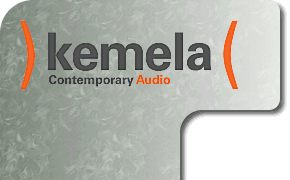

KEF Blade
KEF Blade award winning loudspeakers provide immersive, full bodied, three-dimensional focused sound in a stunning visual design available in custom colors.
What's special about Blade?
In the KEF Blade loudspeaker, four 9" low frequency drivers are situated equidistant from the acoustical center of the midrange and high frequency elements of KEF's most advanced Uni-Q coaxial driver. This configuration creates the world's first single apparent source loudspeaker with a full, powerful, and very coherent frequency range that overcomes the frequency/power limitations of a single driver or the multiple overlapping images of conventional multi-driver loudspeakers. All the KEF Blade drivers are housed in a striking modern design enclosure which itself uses advanced technologies for the lowest possible contribution of unwanted sound vibrations to the pure sound eliminating from the drivers. Few loudspeaker companies have R & D departments with the freedom to create loudspeaker drivers and cabinets out of custom designed materials, engineering methods, and manufacturing ability to produce such a technologically advanced commercial product from a concept prototype at such a reasonable price.
Force-canceling bass drivers allow the cabinet to be super inert and not draw any attention to itself, or to the tonality of the sound by way of cabinet colorations.
Although KEF's Uni-Q coaxial midrange/tweeter driver is used in many of KEF's loudspeakers, in the Blade, the driver is most fully refined using the very best materials, and the concept extended to the whole speaker.
Objective benefits of Single Apparent Source

KEF first introduced the Uni-Q coaxial midrange/tweeter driver in 1988 and thus the current incarnation will soon represent 25 yrs of evolution. While today's loudspeakers are better engineered, most are ultimately constrained by traditional multi-driver design what ever the price. Many speaker companies are satisfied to make incremental improvements in various aspects of speaker design but ignore the interference and the off-axis lobbing patterns generated by separated bass and treble drivers. These effects make speakers very room dependent and have a significant impact on the subjective sound that is not revealed in on-axis anechoic chamber measurements.
With the KEF Blade loudspeaker, the off axis power response is better maintained in the midrange/bass transition region so reverberant energy in the listening room is more evenly balanced and there is no single sweet spot or tonal colorations from uneven off-axis reverberant energy room response. Imaging is simply superb because the drivers are inherently time aligned in all directions. The KEF Blade loudspeaker therefore complies with the requirements for good in-room acoustics. A practical side benefit is that KEF Blade loudspeakers are less sensitive to positioning and more tolerant of room anomalies.
Subjective benefits of Single Apparent Source
While the solid soundstage (space) and imaging qualities (location) are easily appreciated there are other subjective attributes about why a single point source sounds so good that are not so obvious and difficult to measure. That attribute may best be described as focus.
A visual metaphor for the listening experience of the Blade speakers may be found in the Bindu imagery. Bindu is a Sanskrit term meaning point or dot and metaphysically represents sacred cosmic creation, unification, and the infinity of origin and return. The continual cycle of expansion outwards and return inwards is experienced when looking at "Eternal Cycles © Don Cooper". The Blade speakers provide an expansive soundstage but also an inner focus of further, deeper, levels of detail that become revealed as you listen. Sound presents in front of you but there is also strong sense of returning to the original generation of the musical event, the pluck of the string, the creation of the trumpet note, and the intention of the phrasing of the voice. The connection between the generated sound and the creation of the sound is totally engaging to the listener and a special quality of the KEF Blade speakers due to the single apparent source.

"Eternal Cycles" © Don Cooper
Cabinet Engineering
The transfer of energy from a diaphragm to vibrating air molecules is maximized when the structure supporting driver itself is not allowed to move so that all the force can be applied to air rather than pushing the whole cabinet back against the air. With tall floor standing speakers the top of the cabinet may even rock back and forth especially with deep bass notes. This not only dilutes the bass note but such motion also blurs the midrange and treble imaging - an effect not unlike camera judder. The bass drivers in KEF Blade loudspeakers push against each other thus canceling out any tendency for the cabinet to rock. Bass frequencies bend around the whole cabinet 360 degrees. Also the curved cabinet eliminates diffraction effects created in cabinets with square corners. Kef's advanced vibration analysis tools determines the location of internal bracing for a super rigid cabinet despite it's size.



Hand-Built Speakers
KEF Blade loudspeakers are all hand-built by master craftsmen at KEF's production facility in Maidstone, Kent UK. All Blade speakers are manufactured within strict tolerances and are matched to the laboratory standard reference within +/- 0.5dB tolerance. The Blade may be single or bi-wired and comes supplied with a comprehensive accessory box. The two standard finishes are generally available in a few weeks from a small US inventory; custom color finishes (see below) are made to order with a delivery time of approximately 12 weeks.
U.S Retail Price: $32,000 (standard finishes, $3,000 upcharge for custom colors)

